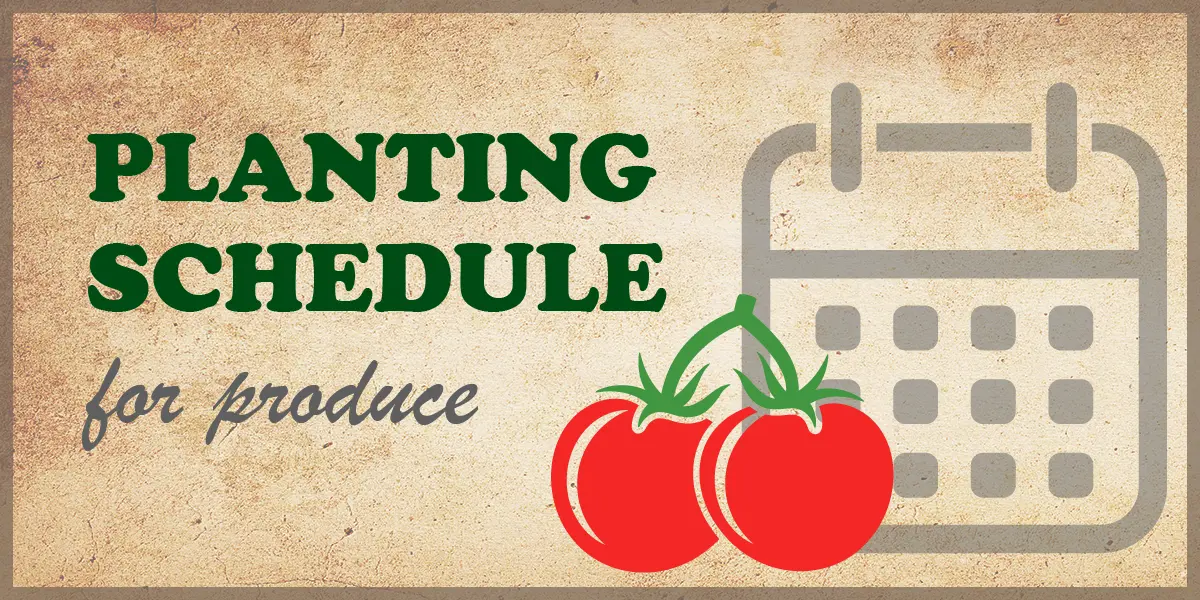Gardening in Southern California is a year-round endeavor, with no forced off-season like winter in Milwaukee. Still, knowing what to plant and when can make the difference between a bountiful garden and one that produces little or nothing.
This guide outlines a planting and harvesting calendar adapted to Southern California’s Mediterranean conditions. While these general planting guidelines apply to most regions in SoCal, always research your city’s climate for more accurate timing. Factors like elevation and microclimates can vary widely.
Why Planting Schedules Matter
Planting schedules optimize growing seasons, ensure healthy crops, and work with nature’s cycles. Southern California’s unique microclimates can be tricky, so a schedule helps:
- Maximize yields by planting at the right time.
- Reduce pest issues by avoiding the overlap of pests’ active periods.
- Conserve water, especially with crops suited to the local environment.
Following a detailed gardening schedule conserves effort and gives your plants their best chance of success.

Keeping a planting schedule ensures your garden’s best chance of success.
Getting Started
- Understand your microclimate. Southern California spans USDA hardiness zones 5a to 11a. Temperature and humidity differ significantly between coastal areas and inland valleys.
- Enrich your soil with compost or organic matter. Southern California’s soil is often sandy or clay-heavy, and amendments can help with drainage and nutrients.
- Choose native or drought-tolerant plants. These flourish with limited water and support the local ecosystem.
Finally, check sunlight requirements. Does your space get full sun, partial shade, or filtered sunlight throughout the day?
Year-Round Plantings
Crops that can be planted at any time of year include:
- Herbs like basil, oregano, and thyme.
- Leafy greens like chard, arugula, and collard greens.
- Root vegetables like carrots, radishes, and turnips.
- Perennial fruits like figs, grapes, and berries.
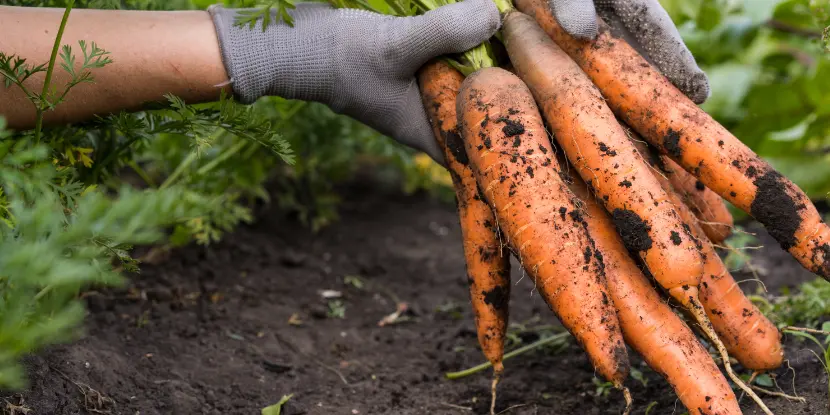
Freshly harvested carrots from the garden. Time for a cleaning!
Month-by-Month Planting Schedule
Note that some fruits and vegetables are susceptible to heat or cold, and benefit from planting and harvesting within specific time frames.
January
Vegetables
- Broccoli, cauliflower, cabbage – Cool-season crops thrive in mild winters.
- Spinach, kale, lettuce – Prefer cooler temperatures, less likely to bolt.
- Peas – Can be planted early. They like cool soil and grow fast.
Fruits
- Strawberries (bare root) – Planting now gives them time to establish before spring.
February
Vegetables
- Beets, carrots, radishes – Root crops love cool soil and shorter days.
- Onions, garlic (late winter) – Still time to plant for summer harvest.
- Swiss chard – Handles cool temps and continues producing through spring.
Fruits
- Cane berries (blackberries, raspberries) – Best planted bare root while dormant.
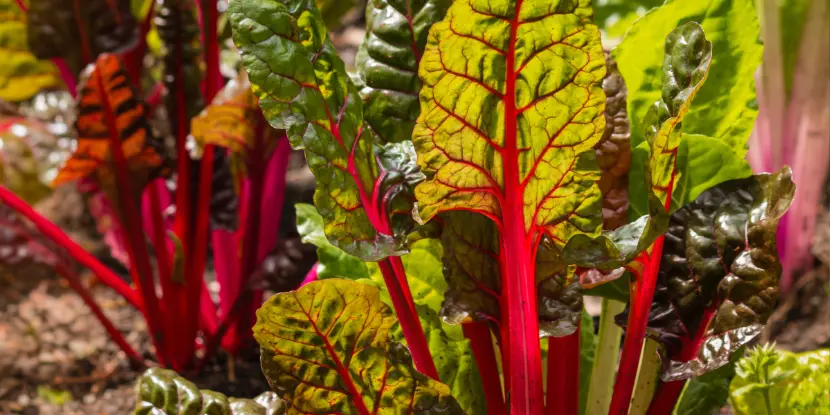
Swiss chard is a cold lover. Just like the Swiss!
March
Vegetables
- Tomatoes (start indoors or transplants), peppers, eggplant – Start seeds indoors for transplanting in May.
- Zucchini, cucumbers, beans – Soil is warming and ideal for fast growers.
- Corn – Early planting provides a longer harvest window.
- Melons, squash – Wait until the soil warms before direct sowing or transplanting.
- Greens (lettuce, spinach, kale) – Direct sow or transplant for an early spring harvest.
Fruits
- Citrus trees – Plant now to take advantage of spring growth.
- Avocados – Plant after the last frost (early spring in SoCal).
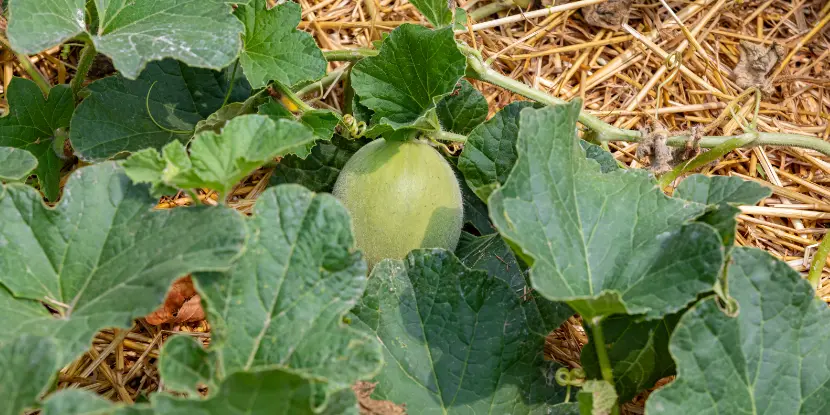
Melons and pumpkins need warm soil and a long growing season.
April
Vegetables
- Melons, pumpkins – Need warm soil and a long growing season.
- Okra, sweet potatoes – Heat lovers; now is a good start time.
- Tomatoes, peppers, eggplant – Ideal time for transplanting outdoors.
Fruits
- Figs, guava – Warm-weather subtropicals love the increasing heat.
- Grapes – Planting now ensures root development before summer.
May
Vegetables
- Basil, dill, cilantro – Herbs thrive with longer days and warm temps.
- Squash, beans, corn – Great time to direct sow heat-loving veggies.
- Malabar spinach – Heat-tolerant green alternative.
Fruits
- Passion fruit – Warmth helps vines establish and flourish.
- Papaya (if protected from cold) – Needs heat and sunlight to thrive.
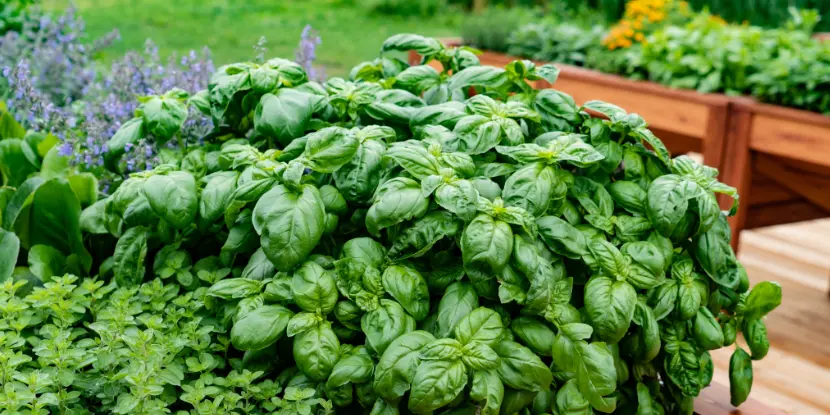
Herbs like basil can be planted year-round in Southern California.
June
Vegetables
- Armenian cucumbers, yardlong beans – Thrive in intense heat.
- Amaranth (greens) – Loves the heat, high-yielding.
- Tomatoes (last round) – Plant heat-tolerant or cherry types.
Fruits
- Watermelon, cantaloupe – Hot weather and long days are ideal.
July
Vegetables
- Sweet potatoes – Last chance for planting before the soil cools.
- Okra – Heat champion, thrives mid-summer.
- Malabar spinach, New Zealand spinach – Excellent heat-tolerant greens.
Fruits
- Bananas (if protected from wind) – Need consistent warmth and water.
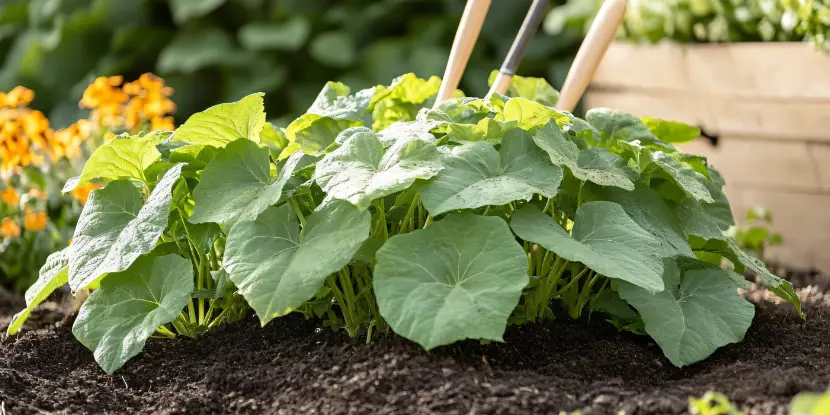
Sweet potatoes do exceptionally well in the heat.
August
Vegetables
- Start fall crops indoors – Broccoli, Cabbage, Kale.
- Plant fast summer crops – Bush beans, zucchini.
- Green onions, chives – Easy to grow year-round.
Fruits
- No significant fruit plantings – Focus on harvesting and garden maintenance.
September
Vegetables
- Broccoli, cauliflower, cabbage – Best planted as transplants.
- Spinach, lettuce, arugula – Cooler nights help prevent bolting.
- Carrots, beets, radishes – Cooler temps = sweeter roots.
Fruits
- Pomegranates (bare root in late Sept) – Thrive in SoCal’s climate.

Cauliflower is a cold-weather vegetable like cabbage and broccoli. Heat can make it bolt.
October
Vegetables
- Garlic, shallots – Fall planting means summer harvest.
- Turnips, mustard greens – Thrive in cool-season gardens.
- Fava beans – Great cover crop, fixes nitrogen in the soil.
Fruits
- Bare root strawberries (early pre-orders) – Plant in late fall for spring fruit.
November
Vegetables
- Peas, spinach, lettuce, kale – Enjoy mild winter growing.
- Onions (sets or seeds) – Plant now for a long growing season.
- Parsley, cilantro – Prefer cooler, moist conditions.
Fruits
- Blueberries (prepare soil now) – Need acidic soil; plant dormant stock soon.
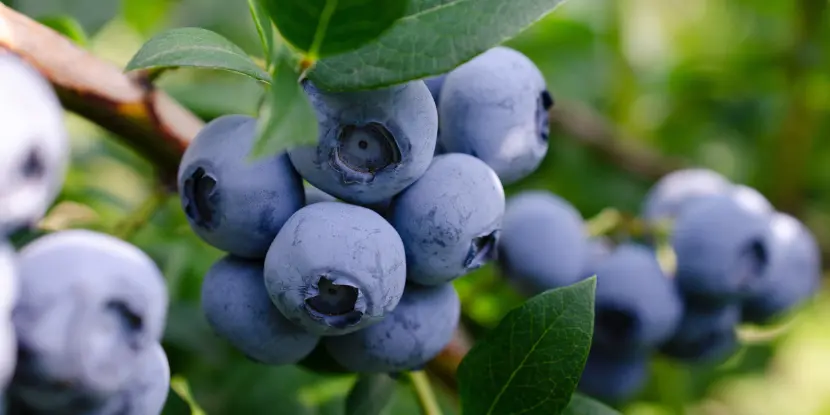
Blueberries need acidic soil and prefer cooler weather.
December
Vegetables
- Cool-weather greens – Mustard, spinach, chard.
- Root crops – Beets, carrots, radishes.
- Cover crops – Clover, vetch to improve soil for spring.
Fruits
When to Harvest
Harvest schedules vary based on what you plant and how Southern California’s climate affects growth. Below is a general timeline:
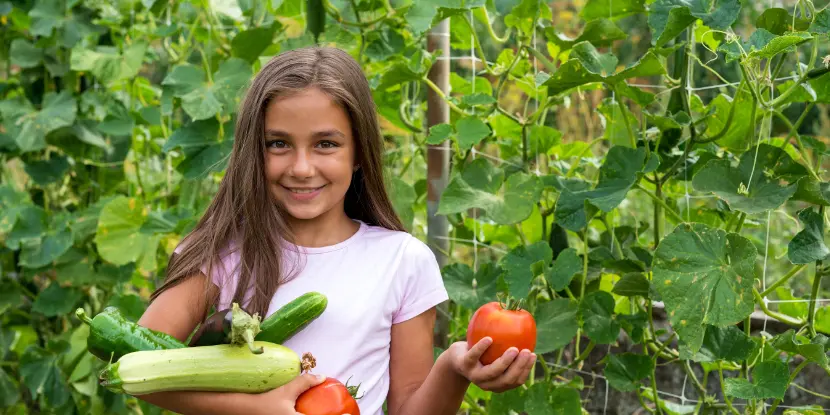
Harvest schedules vary based on what you plant and how Southern California’s climate affects growth.
January to March
- Lemons, kale, and broccoli. Cool-weather crops and evergreen citrus trees.
April to June
- Lettuce, strawberries, and tomatoes. Enjoy early harvests as spring turns to summer.
July to September
- Corn, melons, and summer squash. The heat brings ripe, luscious summer veggies and fruits.
October to December
- Pumpkins, spinach, and pomegranates. Cooler weather signals the time for hearty greens and fall fruits.
FAQs: What & When to Plant
Q: What’s the best month to start a garden in Southern California?
February to March is great for beginners, as many crops thrive in the warming weather.
Q: Do I need to water daily during the summer?
Not necessarily. Deep watering 1–2 times per week is better for encouraging strong roots.
Q: Can I plant year-round?
Yes, thanks to year-round mild temperatures. Always follow appropriate planting guides.
Q: Are raised beds better?
Raised beds improve drainage in the heavy soils common in certain Southern California areas.
Q: How do I know if my soil is healthy?
Conduct a soil test for pH, nutrients, and composition. Testing kits are available at home improvement stores like Anawalt.
Q: When’s the best time to plant fruit trees?
December to January is ideal for dormant varieties.
Q: What’s a common beginner mistake?
Overwatering! Most plants need far less water than new gardeners think.

